PHYS 371
The scientific method
Feynman Lectures: https://www.feynmanlectures.caltech.edu
Learn the tools of experimental physics:
- Interface with the nature world using digital and analog technologies.
- Use that interface to do some physics
More specifically:
- Learn some coding (Arduino, Python/Colab/Jupyter)
- Learn some circuits (Prototyping and basic circuit design)
- Deal with data (Python/Colab/Jupyter)
- Express your scientific thought (LaTeX)
Measurements
Evolution of Measurement Techniques
The Earliest Measurement Tool

Early 1600's painting featuring a telescope.
On the telescopes in the paintings of J. Brueghel the Elder, https://arxiv.org/abs/0907.3745

Galileo's Drawing of the moon as seen through a telescope, 1610
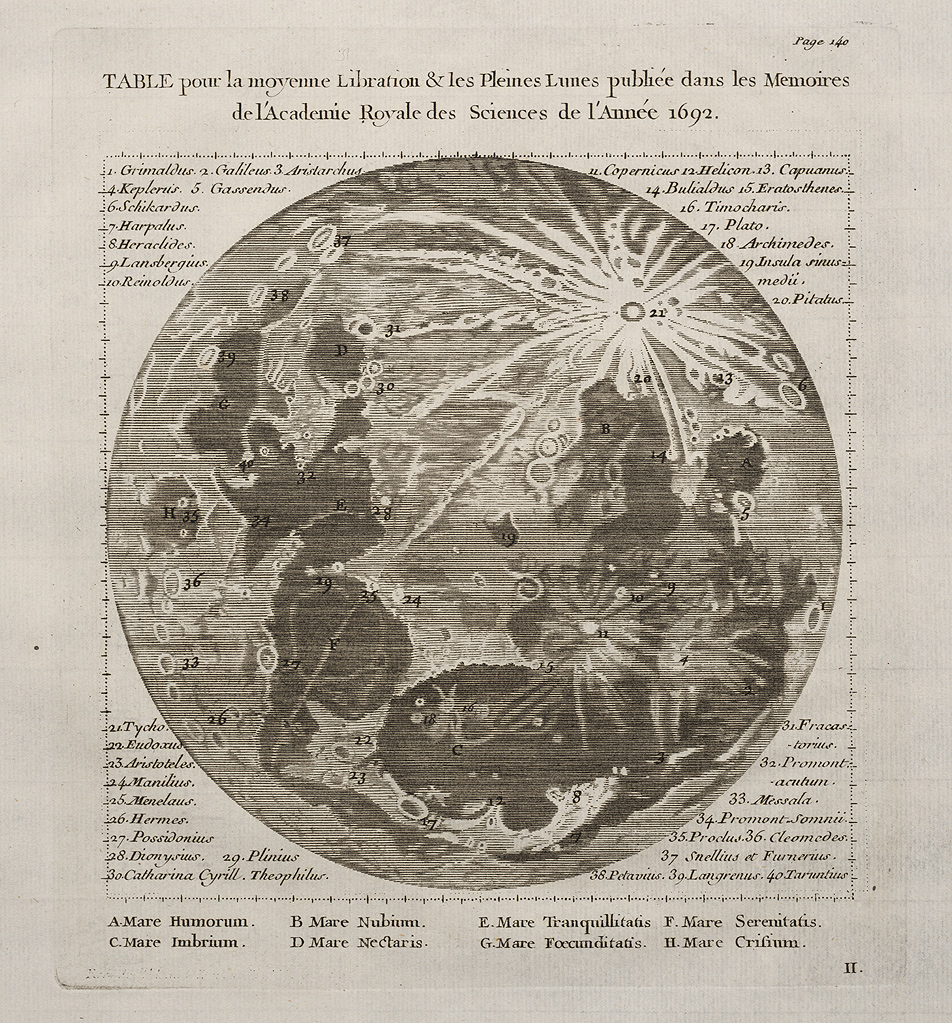
Cassini's version from 1692
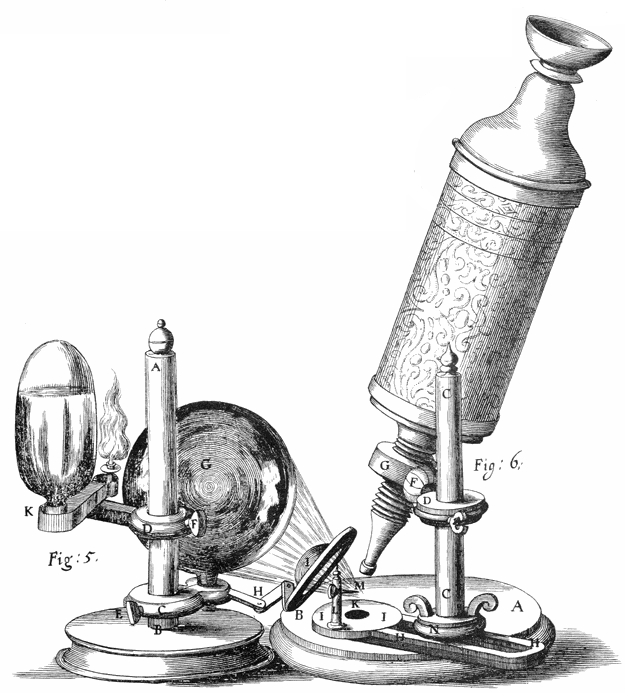
Hooke's Micrographia was among the first to attempt science using a microscope, 1665.
Hooke's Micrographia: Image Source
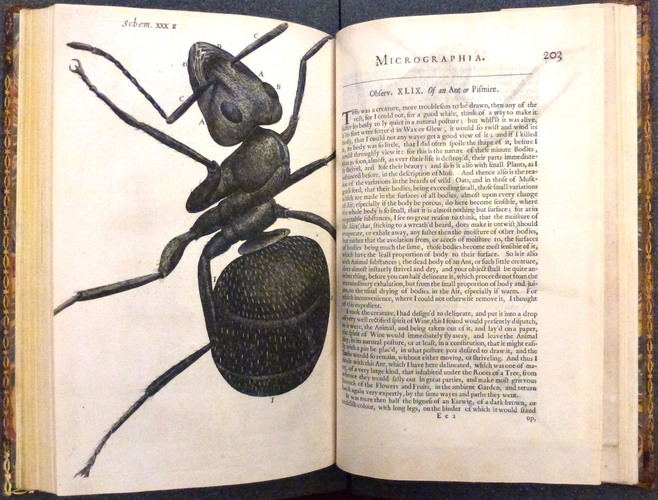
An ant
Hooke's Micrographia: Image Source
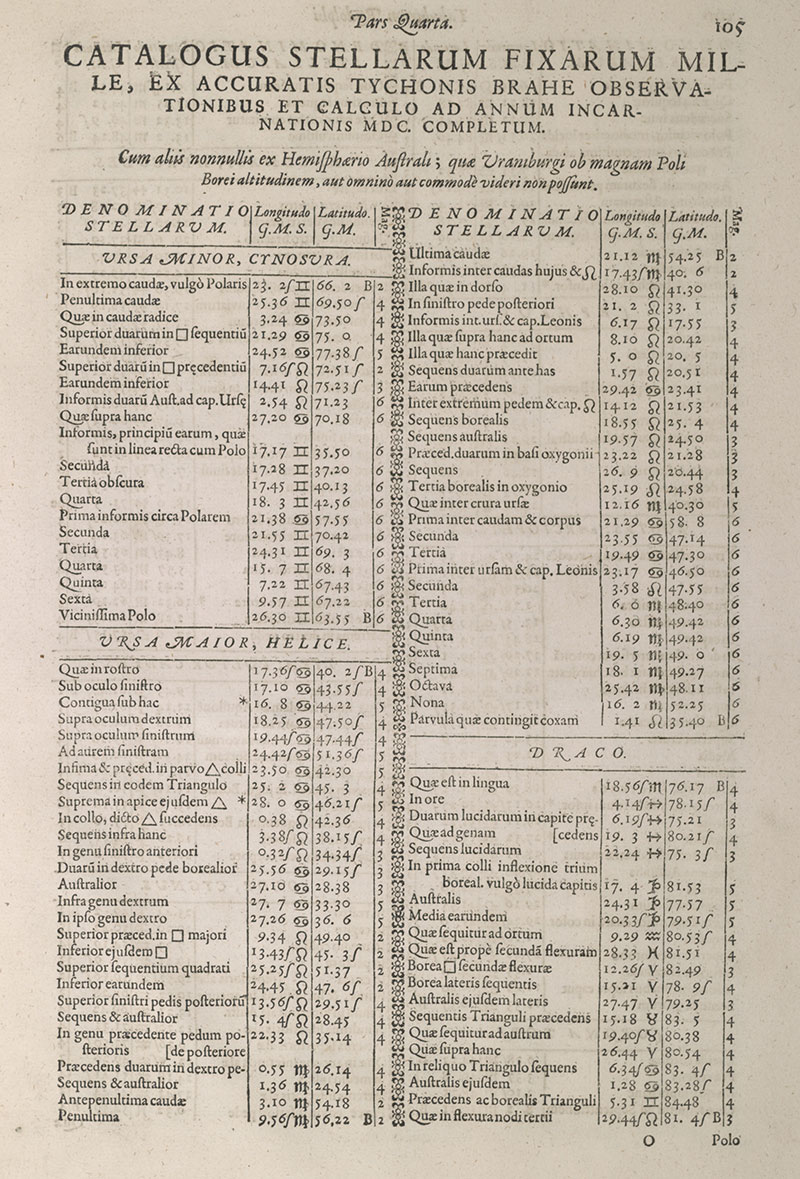
Quantify and Analyze
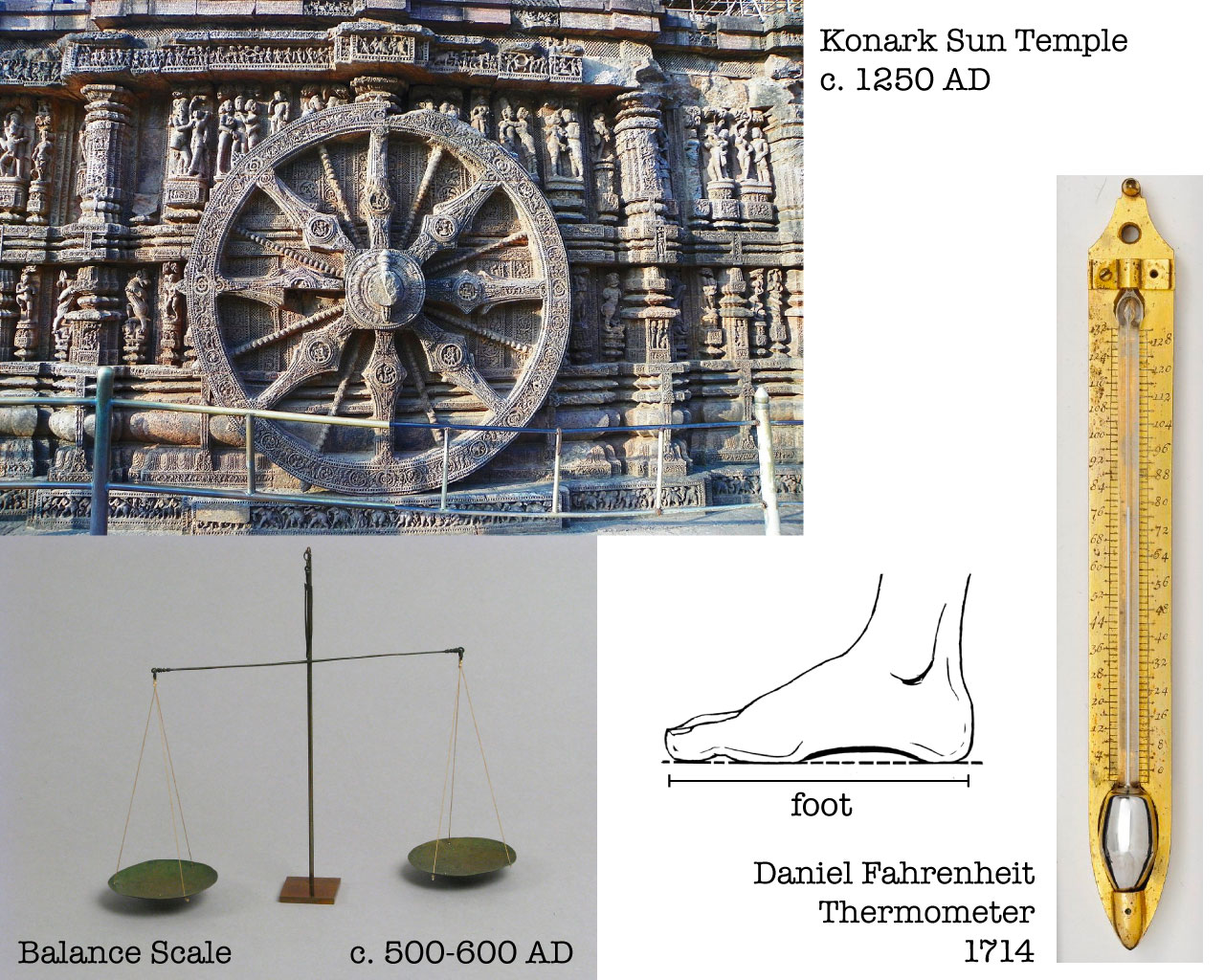
Balance: Met
There are many other things to measure, besides simple visual observation.

Voltage
Almost everything measured in a modern experimental physics lab is measured as a voltage.
Examples:
- Temperature: measure the voltage across a temperature dependent resistor.
- Distance: a digital caliper measures a change in capacitance by measuring $V(t)$
- Magnetic Fields: Measure the Hall Voltage
- Photons: a Charge Coupled Device produces a sequence of voltage values that describe the array of pixels.
Define Voltage
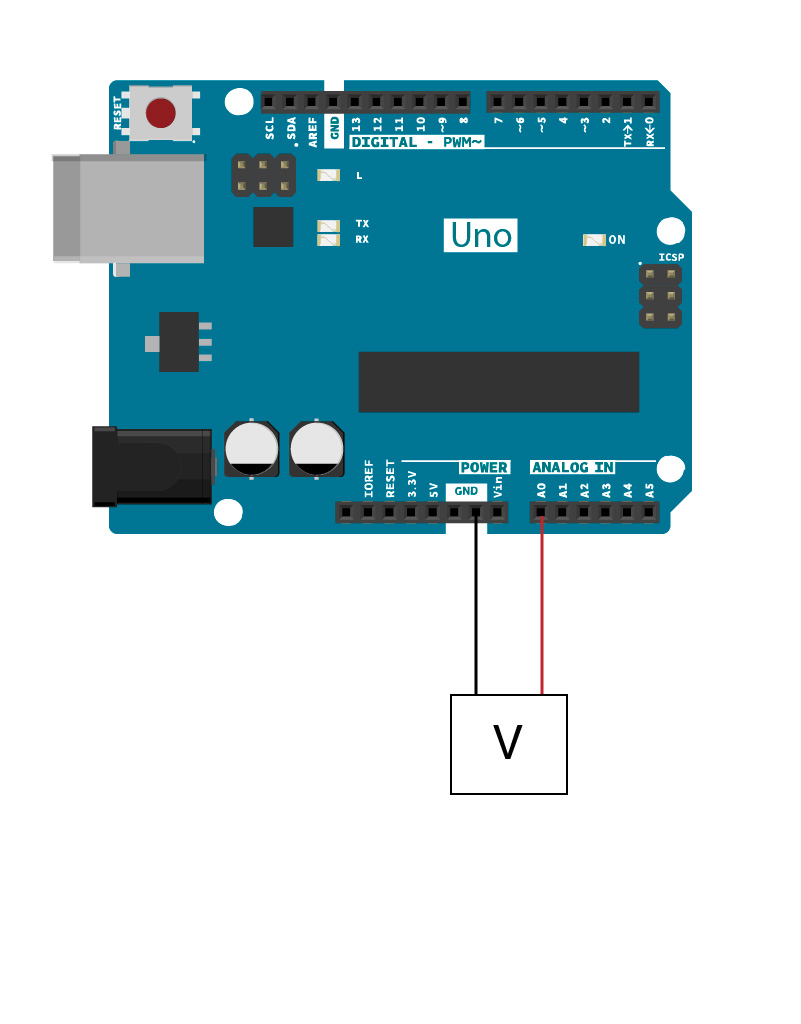
void setup() {
Serial.begin(9600);
}
void loop() {
int sensorValue = analogRead(A0);
Serial.println(sensorValue);
delay(1);
}
Analog/Digital
Actually, we'll be measuring what portion of 5V is applied across the analog input.
Since it's a digital measurement (we'll come back to this), it will appear as a value between 0 and 1023.
0 means 0 V
1023 means 5 V
This is set by the 'resolution' of the system.
The voltage divider circuit diagram
Voltage Divider
The Voltage Divider circuit is the easiest way to measure an unknown resistance. It has some limitations, but will essentially work for many applications $$ V_{\mathrm {out} }={\frac {R_{2}}{R_{1}+R_{2}}}\cdot V_{\mathrm {in} }$$

Schematic illustration
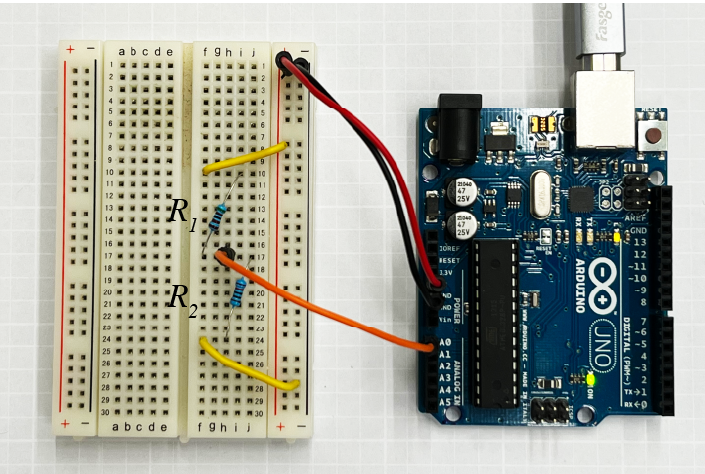
Photograph of Arduino and Breadboard